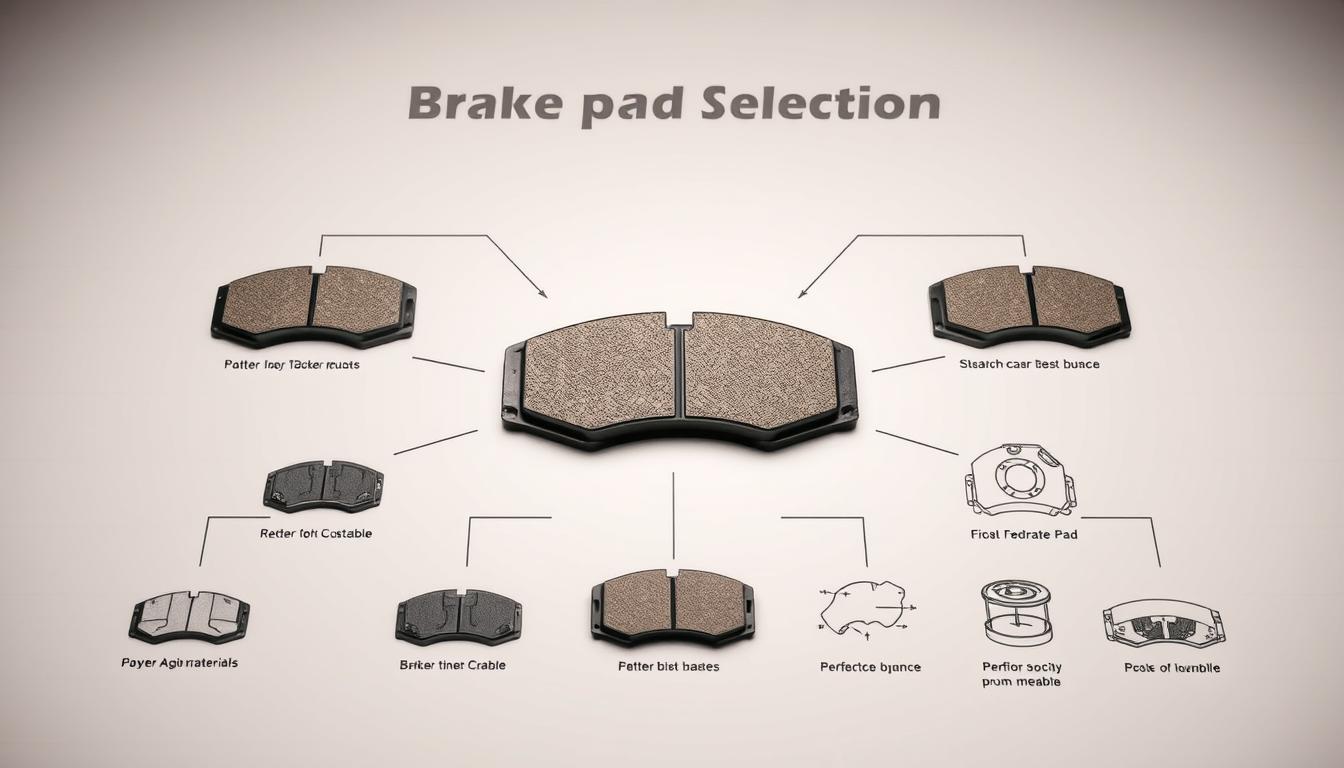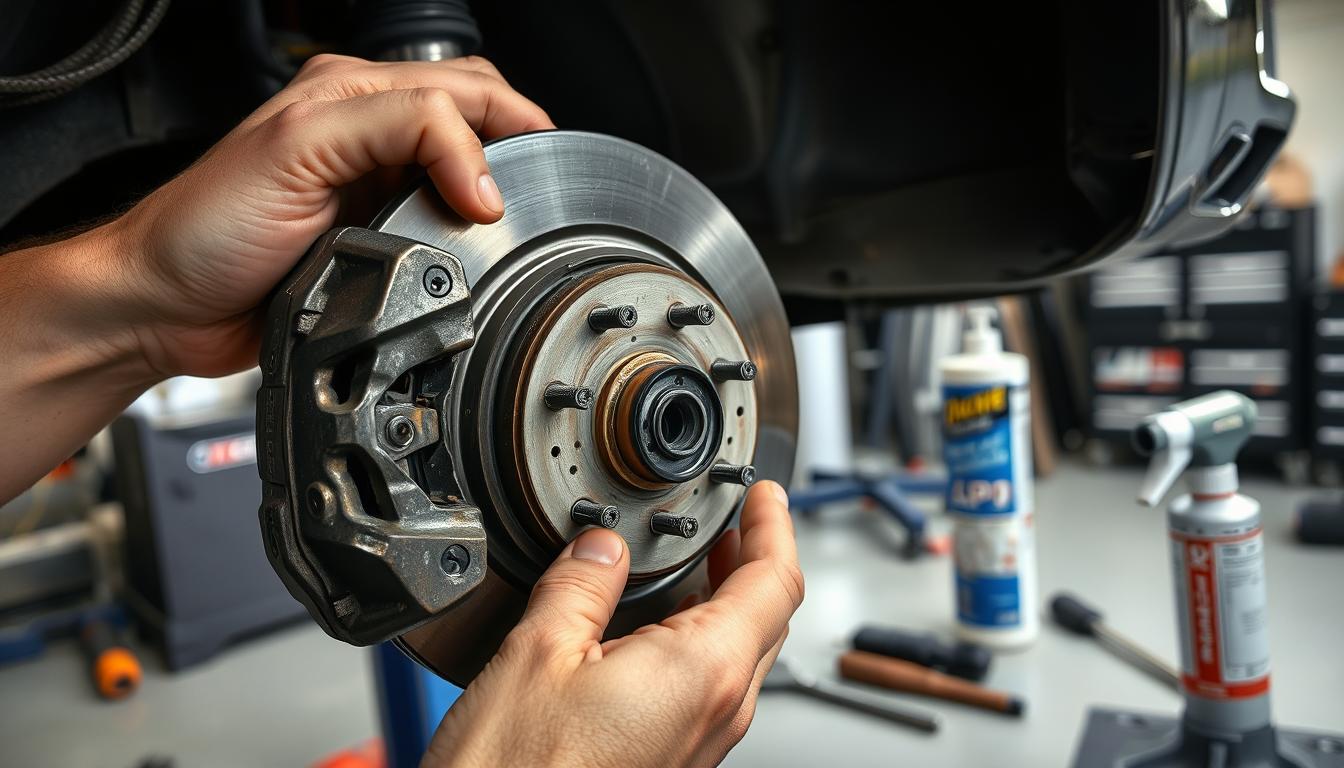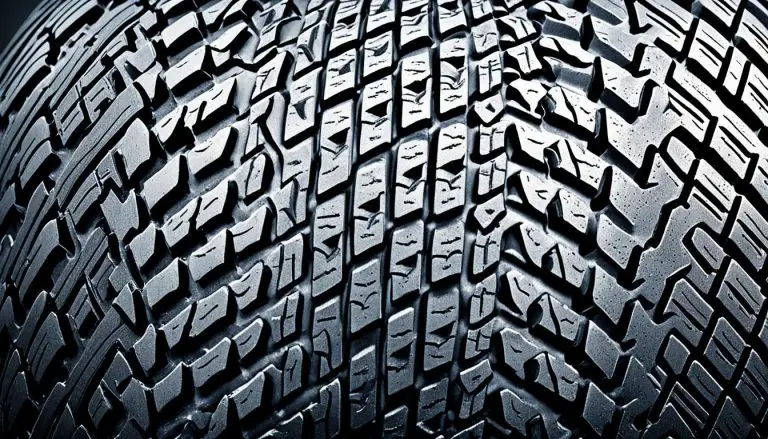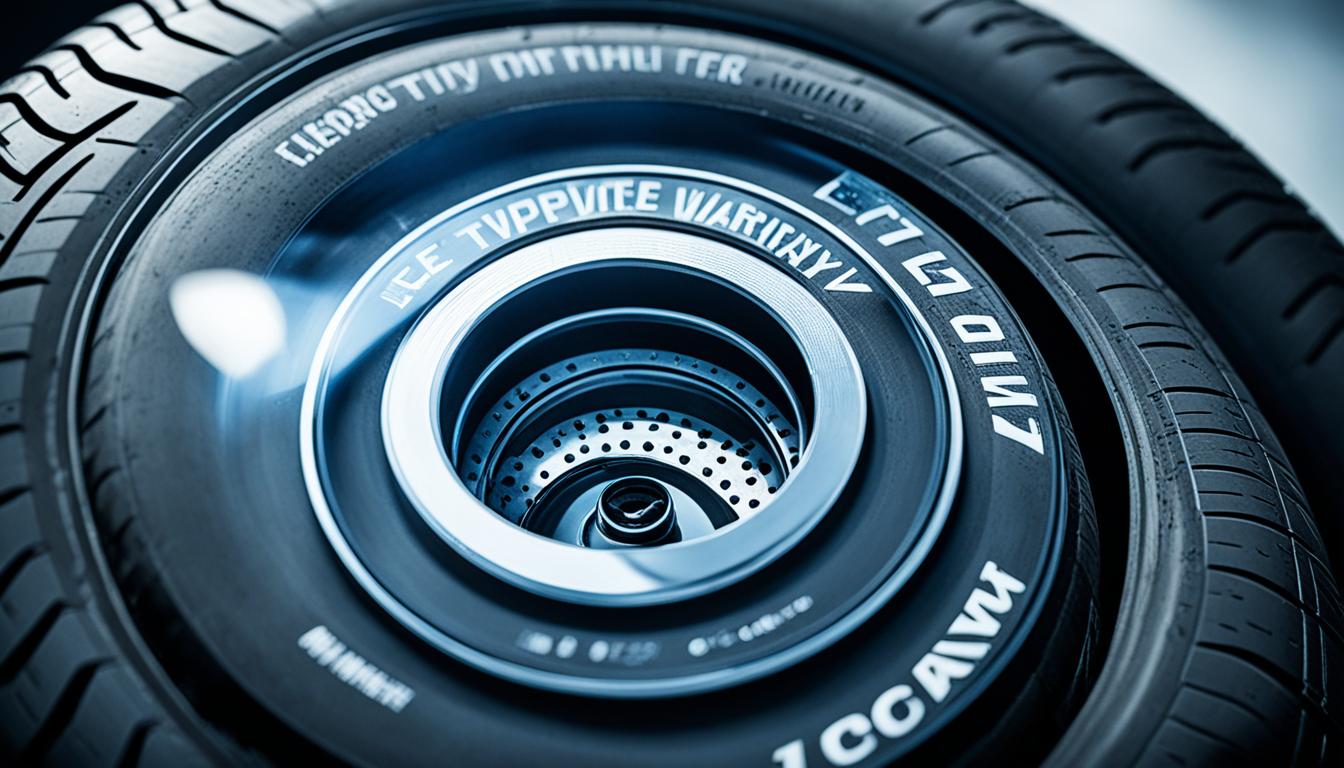
Have you considered how long a tire warranty typically lasts? Warranties usually cover 4-6 years or 50,000-80,000 miles. This coverage ensures your tires perform well for thousands of miles, protecting your investment. Knowing about various tire warranties, their perks, and the claims process can greatly enhance your coverage. It also keeps your vehicle in top shape.
Tire warranties offer more than just protection against tread wear. They can safeguard you from road hazards and manufacturing faults. Some even provide roadside help. Learning about these features lets you confidently file a claim and make your tire investment work harder.
This detailed guide will dive into tire warranty coverage, including mileage guarantees and road hazard protection. Whether looking for new tires or handling a warranty claim, this article guides you. It equips you with the insight to ensure your tires stay protected.
Understanding Tire Warranties
Tire warranties are vital for vehicle owners, offering protection for various tire-related issues. These warranties cover things like tread wear, road hazards, and manufacturing faults. Some even provide roadside assistance. Knowing the details of each warranty type is key to protecting your investment.
What is a Tire Warranty?
A tire warranty ensures a tire meets certain performance standards. Manufacturers offer to repair or replace tires if they fall short. These warranties give consumers peace of mind against tire issues.
Types of Tire Warranties
- Tread Life/Mileage Warranty: Guarantees the expected tread life, usually in miles or years. It offers a prorated refund or a new tire if wear occurs too soon.
- Road Hazard Warranty: Protects against non-negligent tire damage from road debris or conditions. It helps with the cost of repairs or replacements.
- Manufacturer Defect Warranty: Covers defects in materials or workmanship. It ensures tires meet quality standards and perform as promised.
- Roadside Assistance Tire Warranty: Includes roadside help, from inflating tires to repair or replacement during a breakdown.
It’s crucial to understand what each tire warranty offers. By reading and understanding the terms, you’ll know how to protect your tires. This knowledge helps in making smart choices for tire care.
Tread Life and Mileage Warranties
Tire makers know the value of offering durable products. They ensure their customers enjoy long-lasting investments by providing tread life and mileage warranties. Such guarantees often outline the tire’s expected performance over a set number of miles or years, indicating which limit comes first.
Prorated Reimbursement Process
Should a tire show premature wear, the manufacturer steps in with a prorated reimbursement plan. Customers are eligible for a partial refund, considering the remaining tread. The formula calculates this amount based on the purchase cost and the left-over tread life.
Warranty Requirements and Exclusions
To secure a tread life warranty or mileage warranty claim, specific conditions apply. These entail maintaining correct tire pressure, frequent rotations, and meeting the required minimum tread depth. Notably, manufacturers might exclude damages from road incidents, neglect, or off-road use.
Understanding the warranty’s ins and outs is crucial for consumers. It ensures they’re prepared to leverage the coverage. Staying informed about tire care and warranty particulars can extend tire lifespan and shield against sudden replacement expenses.
Road Hazard Warranties
Protecting your tires with a road hazard warranty is a wise move. These warranties guard against damage from nails, potholes, and other debris. Depending on the harm, you might get free repairs or help towards a new tire.
Tire shops often suggest buying a road hazard warranty when you get new tires. It assures you against sudden tire issues. Yet, knowing what the warranty covers is crucial for peace of mind.
| Warranty Coverage | Details |
|---|---|
| Tire Damage Coverage | If your tire wears down to 2/32s, it’s covered. This includes mounting, balancing, repairs, and replacements. |
| Tire Repair Coverage | Firestone’s plan shields tires against potholes, debris, and more. It pays for tire fixes. |
| Tire Replacement Coverage | Firestone’s warranty is for tires like Bridgestone or Firestone. It’s non-transferable and for the original buyer. |
Drivers facing tough road conditions or who wear tires quickly benefit the most from these warranties. With a road hazard warranty, your tires are sheltered from unexpected expenses.
Manufacturer Defect Warranties
Consumers often worry about manufacturing defects in tires that might cause them to fail early or blow out. Luckily, manufacturer defect warranties exist to protect against these concerns.
These warranties address issues with the tire’s materials or how it was made. If a tire fails from a manufacturing defect, it is usually replaced at no cost. Cases with worn treads might lead to a partial refund instead.
When consumers buy new tires, they usually get a manufacturer defect warranty. It prevents them from paying for a tire that fails through no fault of theirs. This keeps their purchase safe and maintains its value.
| Warranty Type | Coverage | Exclusions |
|---|---|---|
| Manufacturer Defect Warranty |
|
|
Understanding manufacturer defect warranties helps consumers choose new tires wisely. It lets them trust their purchase to be free of major faults.
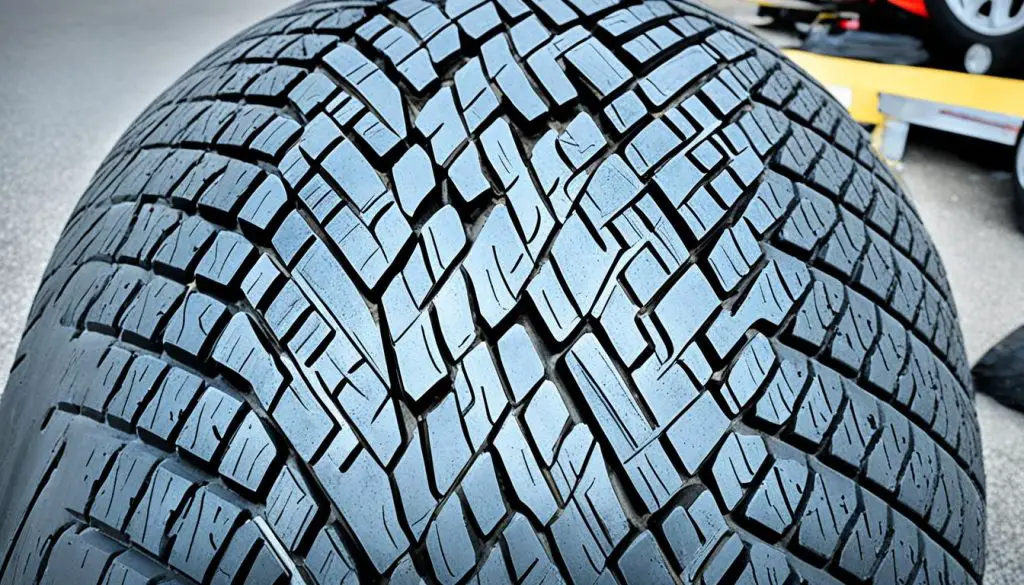
Roadside Assistance tire warranty coverage
Many tire manufacturers include roadside assistance in their warranties. It’s a huge help during tire emergencies on the road. This coverage usually offers services such as:
- Flat Tire Service – Getting help to change a flat tire, including a temporary spare or towing to a nearby repair shop.
- Tire Change Service – Assisting with tire change, whether for a flat or regular maintenance.
- Towing Coverage – If a tire is too damaged to drive on, the vehicle can be towed to a repair shop within the coverage.
These services provide peace of mind and convenience, especially when far from home. The original and new replacement tires typically enjoy this support.
| Coverage Benefit | Maximum Limit |
|---|---|
| Towing/Roadside Assistance Reimbursement | Up to $50 per occurrence |
| Rental Car Reimbursement | Up to $30 per day for 3 days, or $50 per day for 5 days |
| Trip Interruption Coverage | Up to $100 per day for the first 3 consecutive days |
Understanding the specifics of your tire warranty’s roadside assistance is crucial. It ensures you make the most of the benefits without facing unexpected limitations or exclusions.
Voiding a Tire Warranty
Tire warranties are there to shield buyers from manufacturing errors and early wear. However, they have specific rules that must be followed. If you don’t take care of your tires or use them outside the norm, your warranty can be voided. It’s essential to know why warranties are voided to protect your investment.
Common Causes of Voided Warranties
Improper tire maintenance is a top reason warranties are voided. This means not rotating your tires regularly, failing to keep the right air pressure, and delaying when you should replace them. Tire makers usually ask for at least 2/32 inches of tread to cover a warranty. If your tires wear out more than that, your warranty may be invalid.
Damage from road hazards, like potholes, nails, or debris, is another big issue. Manufacturers might offer protection, but with restrictions. You’ll need evidence that the damage wasn’t due to your neglect. Big hits from road hazards that cut, puncture, or visibly harm your tires might not be covered.
Putting your tires through off-road or racing use will definitely void the warranty. These warranties are meant for regular cars on paved roads, not for off-road or high-speed activities. Going past the designated use could make your tires fail sooner, but the manufacturer won’t help pay for that.
To maintain your tire warranty, stick to the maker’s care practices and intended use. Keep a close eye on your tire’s health, follow the rotation plan, and drive within normal conditions. This way, you’re less likely to accidentally void your warranty.
Tire Warranties and New Car Purchases
When you buy a new car, it’s key to know the limits of the tire warranty. The automaker’s bumper-to-bumper warranty generally doesn’t cover the tires. This means buyers need to look into the tire manufacturer’s warranty themselves.
New car tire warranty, tire warranty with new car, and tire coverage in new car warranty are important factors to consider for tire protection. These warranties typically cover material and workmanship defects. This includes issues like sidewall bulges, belt separation, uneven wear, and balance problems.
Yet, there are exceptions and constraints to be aware of. These often exclude regular wear, road damages, and have time or distance limits. To fully benefit from a tire warranty, understanding the terms, maintaining your tires well, and documenting care are crucial.
Tire Warranty Coverage and Exclusions
- Manufacturer’s warranties typically cover defects in materials and workmanship, such as sidewall bulges, belt separation, uneven tread wear, and balance or uniformity issues.
- Warranties have limitations and exclusions, including normal wear and tear, road hazards, mileage, and time limits.
- Road hazard warranties commonly cover puncture repairs, tire replacements, cosmetic damage, and towing and assistance services, but may have limits on the total amount they will pay.
- Proper tire maintenance, such as maintaining recommended pressure, regular rotation, and proper alignment, is crucial to avoid voiding the warranty.
Extended vehicle warranties may cover tires to a point. But, the details vary by plan. Remember, good tire care is necessary to keep warranty coverage intact.
Learning about new car tire warranty, tire warranty with new car, and tire coverage in new car warranty helps new car owners make the most of their tire protection. This safeguards their investment in tire performance.
Filing a Warranty Claim
Maximizing your tire warranty involves thorough documentation. To file a tire warranty claim, you must provide purchase proof, show you’ve properly maintained the tires, and demonstrate any premature wear or damage.
Required Documentation
The tire warranty claim process varies by brand, necessitating a clear look at what’s needed. This usually includes:
- Receipts for recommended tire rotations
- Evidence of maintaining correct tire pressure
- Tire photos or the damaged tire itself for examination
Having your tire warranty claim documentation at hand makes the process smoother. Manufacturers want evidence of tire care. Showing this increases your chances of a successful claim.

Making a strong case for tire coverage involves precise documentation. With the proper documentation and thoroughness, claiming tire warranty becomes manageable.
Tire Maintenance and Warranty Compliance
Keeping your tires in top condition is vital for warranty validity. Simple upkeep routines are key to keeping your warranty intact:
- Regular Tire Inflation Checks – Keep your tire pressures at levels recommended by the car maker. Incorrect pressures might wear out the tread early, potentially canceling the warranty.
- Routine Tire Rotation – Follow the maker’s rotation intervals to ensure even tread wear. This habit extends your tires’ life and maintains warranty benefits.
- Tread Depth Monitoring – Frequently check your tires’ tread depth. Many warranties demand a certain depth for coverage to apply. Swap out tires before they reach this point.
It’s wise to document all tire maintenance. This paperwork is crucial if a warranty claim is necessary. Adhering to these guidelines keeps your tires performing well and safeguards your purchase.
| Maintenance Task | Recommended Frequency | Warranty Compliance |
|---|---|---|
| Tire Inflation Check | Monthly | Proper inflation is required to maintain warranty coverage |
| Tire Rotation | Every 5,000-8,000 miles | Rotating tires as per manufacturer’s recommendations helps preserve warranty |
| Tread Depth Inspection | Every oil change | Tires must meet minimum tread depth to be eligible for warranty replacement |
Embracing best tire maintenance techniques is critical. It ensures your warranty remains valid. A little effort now can prevent issues and expenses later on.
Conclusion
Tire warranties are vital for safeguarding your investment. They offer critical protection against various issues. These include premature tread wear, road hazards, and manufacturing defects. By knowing the types of warranties and how to file a claim, you ensure maximum benefits and lower surprise costs.
Maintaining your tires as the manufacturer recommends is crucial. It keeps your warranty valid and extends your tire’s life, saving you money. A strong tire warranty brings peace of mind. You’ll be ready to hit the road without worries.
Understanding the value of tire warranty coverage is important. It offers many benefits and helps you maximize your warranty. Being informed and proactive makes a big difference in your experience and finances. Make the most of your tire warranty to keep your vehicle in top shape for the long haul.
FAQ
Q: What is a tire warranty?
A: A tire warranty assures the tire’s performance for a set time or miles in normal driving conditions. It includes guarantees on tread wear, road hazards, and manufacturing faults. Sometimes, it covers roadside aid too.
Q: What are the main types of tire warranties?
A: Tread life/mileage, road hazard, manufacturer defect, and roadside assistance are the main warranties. They each have unique coverage and claim requirements. To get benefits, one must meet these conditions.
Q: How do tread life and mileage warranties work?
A: Tread life/mileage warranties predict how long a tire should last, in miles or years. If they wear out too soon, you might get some money back. But, you must keep them properly inflated, rotated, and meet minimum tread depth for a claim.
Q: What does a road hazard warranty cover?
A: Against things like nails or potholes, road hazard warranties protect your tires’ damage. They might pay to fix a tire or help buy a new one, depending on the damage level.
Q: What is a manufacturer defect warranty?
A: These warranties safeguard against tire issues from its making. If a defect causes a failure, the maker might replace it or pay part of a new one’s cost. This depends on the tread wear.
Q: What is roadside assistance tire warranty coverage?
A: Sometimes, warranties also cover roadside help. Flat tire repairs, changes, or towing to a repair shop might be included. It’s an extra benefit from some tire manufacturers.
Q: How can a tire warranty be voided?
A: Misusing or neglecting tire care can void warranties. This includes not driving within the set “normal conditions” and avoiding needed maintenance. Off-road or racing use, improper inflation, or lack of rotations are examples of this.
Q: Does a vehicle’s bumper-to-bumper warranty cover the tires?
A: No, automakers’ bumper-to-bumper warranties almost never cover tires. Since tires are expected to wear and be replaced, they’re not part of the vehicle’s full coverage. Buyers need to manage tire warranties separately.
Q: What documentation is required to file a tire warranty claim?
A: To file a claim, one needs a purchase proof, proof of proper maintenance, and damage or early wear evidence. This means showing rotation receipts, inflation checks, and possibly damaged tire photos for manufacturer review.
Q: How important is proper tire maintenance for maintaining a warranty?
A: Proper tire care is key to keep warranties active. It involves maintaining air pressure, rotating tires, and watching the tread depth. Detailed maintenance records support any potential claims.

